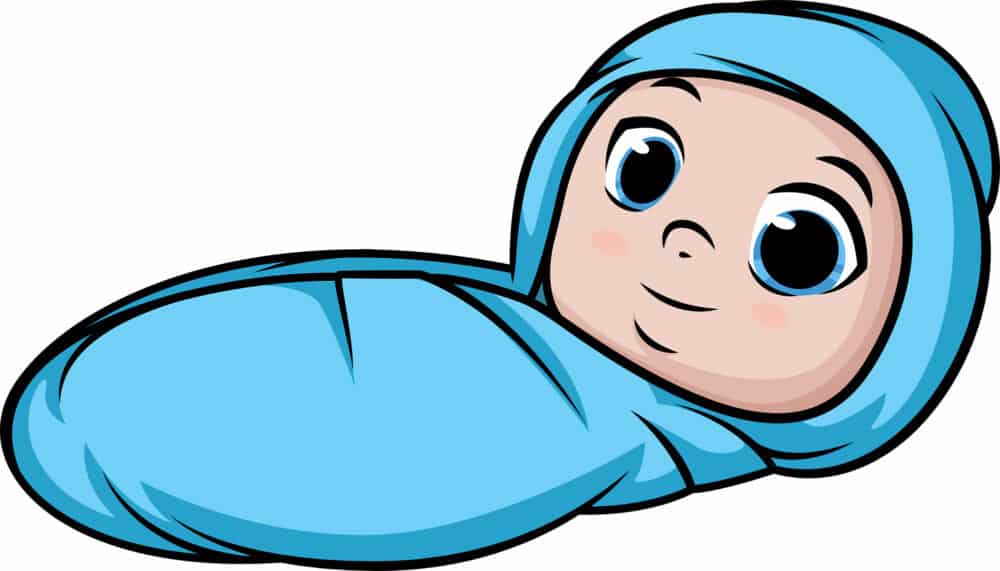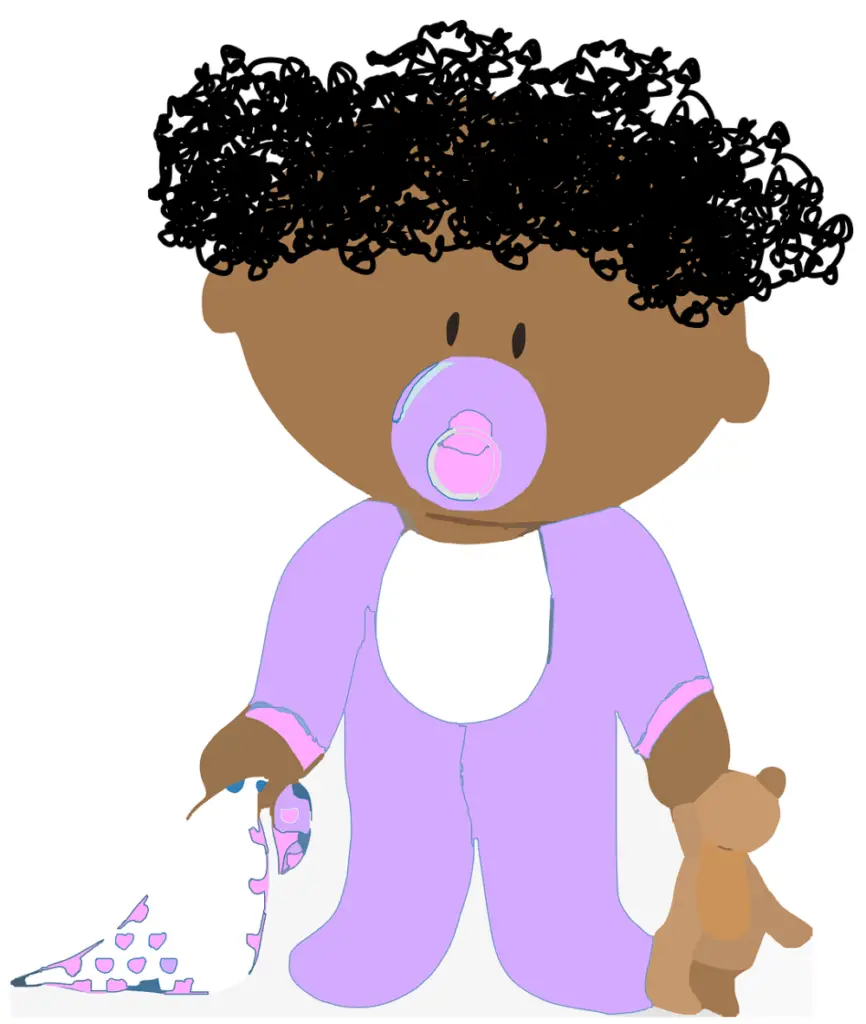
As a parent, you want your kid to be safe and comfortable during the night. In the 1990s, sleep sacks were invented to provide a safer alternative to loose blankets in a child’s crib. Sleep sacks offer a transitional stage between swaddling and regular blankets, but how do you know it is time to make the transition from sleep sack to blanket?
The use of sleep sacks should be stopped at approximately (1) one-year-old. They are safe to use from eight weeks old, which is usually when a baby is able to turn over. Once an infant becomes mobile, though not dangerous to use, they may find a sleep sack too confining, hot, or small.
This short article will teach you all you need to know about when to stop using a sleep sack with your child. From understanding when to stop using sleep sacks to tips on making the transition from a sleep sack to a blanket, keep reading to find out when and how to stop using a sleep sack! (If you are looking to purchase a sleep sack, here’s the most popular one found at Amazon.)
Contents
When Does Your Kid No Longer Need a Sleep Sack?
Sleep sacks are designed to help decrease the risk of SIDS (Sudden Infant Death Syndrome). The Mayo Clinic explains that “Sudden infant death syndrome (SIDS) is the unexplained death, usually during sleep, of a seemingly healthy baby less than a year old. SIDS is sometimes known as crib death because the infants often die in their cribs.”
Unlike a blanket, which can entangle or suffocate a child, or a swaddle, which can make it impossible for the baby to get out of a smothering position, a sleep sack provides secure warmth without severe restriction to your baby’s movements.
Understanding that infant safety is the reason behind sleep sacks explains when your kid no longer needs one. Your child does not require a sleep sack once they are not in danger of accidental smothering or injury when left alone in their crib.
In essence, once your child has enough movement control to avoid becoming tangled in blankets and to move themselves out of any dangerous smothering positions, they do not need a sleep sack. For most children, around one year of age is when they are capable enough to not be at significant risk for SIDS.
Once they can move well enough, most children do not need a sleep sack, but this does not necessarily mean that they have to transition to blankets right away. The great thing about sleep sacks is that they remain safe to use, even when your child no longer needs them.
When to Stop Using a Sleep Sack
When I had my first child, it was during the mid-90s, right at the heightened awareness of SIDS. Of course, SIDS became a great concern. Knowing proper sleeping conditions was part of SIDS prevention for all new parents.
A sleep sack is not dangerous to your child as long as it is used after 8 weeks of age (or when the baby learns to roll over). As long as your child’s arms are free, sleep sacks are a safe sleeping tool. You may continue to use a sleep sack for convenience, even when it is no longer paramount for your baby’s safety.
If there is no point at which sleep sacks become problematic, how do you know it’s time to move on from a sleep sack? Three tells can inform you that your child is ready to move to loose blankets.
Your Child No Longer Likes the Sleep Sack
Believe it or not, the simplest method to know when to ditch the sleep sack is to pay attention to your kid. Many babies like to practice new skills such as crawling and rolling in their cribs. As such, as your child becomes increasingly mobile, they may begin to be frustrated by the confinement of a sleep sack.
If your child is mobile enough to be upset by the sleep sack, then they are most likely mobile enough to be safe without it. Sleep sacks protect against suffocation and entanglement, but once your baby can move sufficiently, these dangers are significantly reduced anyway.
Your Child Is Too Warm

Many parents worry about their child being too cold, but overheating is an equal concern. Sleep sacks are sleeping bags for babies, and they do give your baby quite a bit of heat.
When your baby is still so young that suffocation in the night could be an issue, ensure that you do not dress your baby too warmly under their sleep sack.
Once your baby is around a year old, you may want to encourage a transition from a sleep sack to a blanket so that your baby can sleep cooler. Toddlers are more likely to have nightmares when they are too warm. Getting rid of the sleep sack by toddler age can therefore help your child sleep peacefully.
Please note that this suggestion depends mostly on the climate of the area in which you live. If you live in a hot climate, this will be a much more pertinent tip than for someone living in a cooler area.
Also, know that if you are worried your child is too hot, but they are not yet at an age where a loose blanket would be safe, you can purchase sleep sacks made of more breathable fabric.
Since cotton tends to be one of these more breathable materials, this option for a sleep sack here at Amazon is not only the most popular choice, but also tends to be one of the more breathable as well.
Your Child Has Outgrown Their Sleep Sack
If nothing else strikes you as a sign that your child is ready to move out of sleep sacks, outgrowing their sleep sack is a sure way to tell that it is time to transition. Trust me, you’ll know when it happens!
Sleep sacks can be purchased to fit children up to 3 years old. However, after your child hits one year old, sleep sacks become an option rather than a necessity.
My children didn’t like not being able to move their feet or kick around in their cribs, especially our second child, our daughter, Lexi. She needed to wiggle and a sleep sack was not working for her after about 8 months.
Thus, if your child is over a year old and has outgrown their current sleep sack, it may be an excellent time to try blankets with them instead.
Tips for Transitioning from a Sleep Sack to a Blanket

Doing anything to disrupt your child’s sleep can be a scary proposition (and especially difficult on the parent’s sleep schedule!). Luckily, most parents find that moving from a sleep sack to a blanket is something that many babies handle easily. However, if you find that your child is especially attached to their sleep sack, here are some tips:
- Wait until they are older. As we have said, there is no real danger in continuing to use the sleep sack even if your child no longer requires it to be safe. If the first attempt without a sleep sack goes poorly, there is no harm in waiting a bit before trying again.
- Do it in small steps. Instead of trying to ditch the sleep, sack completely, try doing some nights with it and some without to let your child adjust. You could also focus on doing just naps without the sleep sack at first.
- Use footie pajamas. This is a natural progression from the sleep sack- it’s basically a sleep sack with feet after all. Most also come with non-slip grippers, which are helpful for babies taking their first steps. Here’s a great one to try, found on Amazon.
- Accept that it may take some adjusting. Our babies are sensitive, so doing something different in their nightly routine may cause a ruckus. Be prepared to tough it out for a night or two if you are sure that your baby will be safe without the sleep sack.
In general, the transition from a sleep sack to a blanket is not something that causes babies a lot of stress, so give it a try before you start scheming. Also, know that it is entirely natural for your child to have trouble staying covered with the loose blanket at first. They will learn in time.
Conclusion
Remember that sleep sacks are meant as a protection against SIDS, which is most likely to occur in the first year of life. After that first year, sleep sacks become an optional sleep method rather than an important safety device. Pay attention to your child’s level of movement, warmth, and the fit of their sleep sack to determine when they are ready to stop using the sleep sack (and transition to footie pajamas!).
Sources
https://www.babysleeptrainer.com/are-baby-sleep-sacks-safe/
https://kytebaby.com/blogs/news/using-a-sleep-bab-when-to-start-and-when-to-stop
